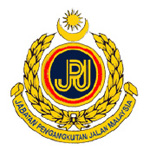 While we use our camera phones to bring you spyshots, many have been using them to catch traffic offenders in action. Bernama reports that the Road Transport Department (JPJ) has received 26,880 picture-attached complaints via MMS from the public. The department’s director-general, Datuk Solah Mat Hassan, said of that total received between January and August this year, 16,349 were solved, 4,659 cases blacklisted and 5,872 others were under investigation.
While we use our camera phones to bring you spyshots, many have been using them to catch traffic offenders in action. Bernama reports that the Road Transport Department (JPJ) has received 26,880 picture-attached complaints via MMS from the public. The department’s director-general, Datuk Solah Mat Hassan, said of that total received between January and August this year, 16,349 were solved, 4,659 cases blacklisted and 5,872 others were under investigation.
The popular MMS complaints were for beating the red lights (7,890 cases), overtaking on double lines (2,012), cutting queues (3,190) and using mobile phones while driving (850), besides motorcyclists not wearing helmets (5,597), Datuk Solah revealed, adding that JPJ will not set up road blocks for this Raya season, and will instead rely on MMS complaints from the public.
When asked by reporters whether public complaints via MMS is legal, he said the matter had been discussed in great detail. “This is because each complaint should be attached with sufficient and clear information like picture, time and place the offence was allegedly committed before any action can be taken. We will also call the alleged traffic offender to our nearest office for questioning,” he said.
This effectively means that JPJ has a huge army of MMS snipers patrolling the roads on their behalf! What do you think about this development? Anyone here been hauled up for questioning or were issued summonsed based on MMS before?
Looking to sell your car? Sell it with Carro.


AI-generated Summary ✨
Comments mainly support the JPJ initiative to combat traffic violations through MMS complaints, highlighting frustrations with reckless driving behaviors like cutting queues, running red lights, and speeding. Many believe this method can deter offenders by encouraging public participation and creating fear among drivers. Some concern about safety risks of taking photos while driving and question whether MMS evidence is sufficient for legal action. There are also critiques about the practicality of the system, potential abuse, and the need for proper enforcement and better infrastructure. Overall, sentiments are positive about using community effort to improve road discipline, but many urge improvements, clearer guidelines, and supplementary measures for effective enforcement.